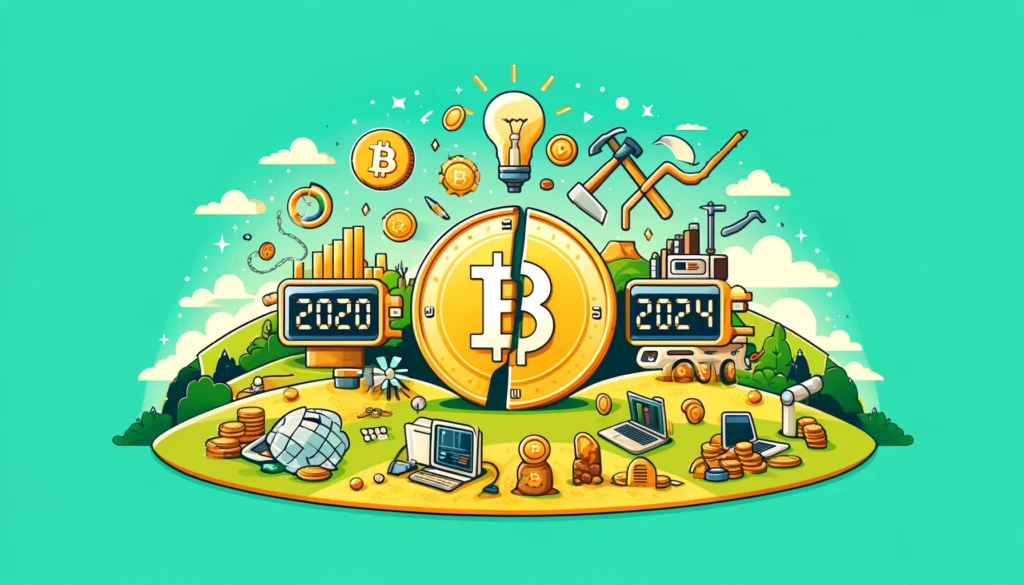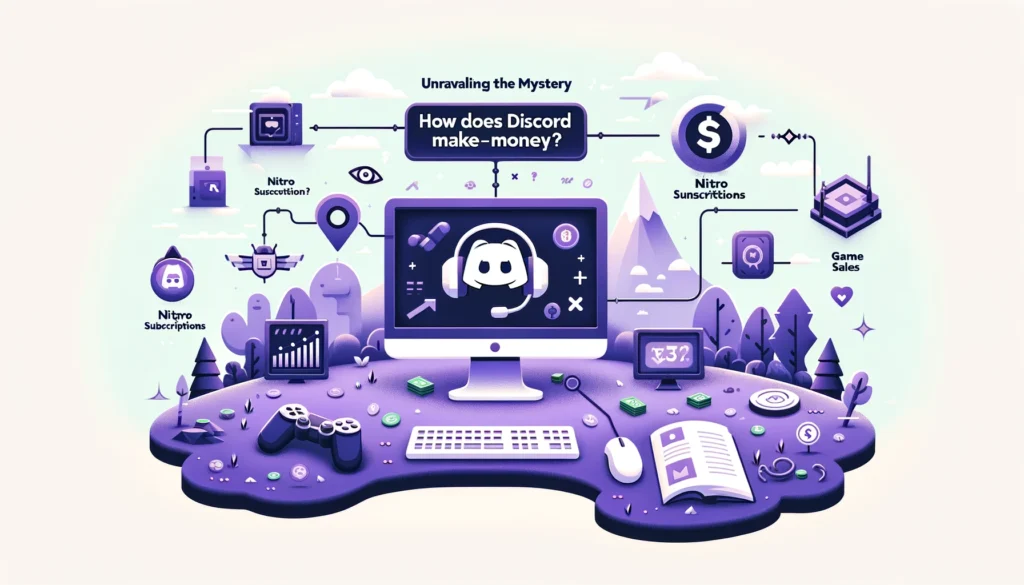What Happened during the Bitcoin Halving 2020 and how it’s relevant in 2024?
What is Bitcoin Halving? A Simple Explanation

Bitcoin halving is an important event for Bitcoin, the digital currency you might have heard about. About every four years, the number of Bitcoins that miners, the people who create new Bitcoins, receive as a reward is cut in half. This event is called “halving” because it halves the reward.
Why does Bitcoin do this? It’s to make sure that not too many Bitcoins are made too quickly. This is similar to limiting the amount of gold mined each year to keep its value.
When Bitcoin started in 2009, miners received 50 Bitcoins for every new block of transactions they added to the system. After the first halving, they received 25, and this number keeps getting smaller with each halving.
This process helps keep Bitcoin rare and potentially more valuable over time, just like gold or diamonds.
Mechanics of Bitcoin Halving
Bitcoin mining involves the process of adding new transactions to the Bitcoin blockchain. Miners use powerful computers to solve complex mathematical problems that validate transactions.
The first miner to solve the problem gets to add a “block” of transactions to the blockchain and in return, receives a reward in Bitcoins.
The block reward is the incentive for miners to keep their computers running and solving transactions. It comprises two components: the new Bitcoins created with each block and the transaction fees from all the transactions included in the block.
Historical Overview of Past Halvings
First Halving – November 2012
The first Bitcoin halving occurred on November 28, 2012. At this point, the reward for mining a new block was cut from 50 Bitcoins to 25 Bitcoins. This event was a significant test for Bitcoin’s economic model and was closely watched by investors and enthusiasts alike.
Following the halving, Bitcoin’s price saw its first major rally, fueling debates and discussions on its viability as an investment.
Second Halving – July 2016
The second halving took place on July 9, 2016, reducing the mining reward from 25 Bitcoins to 12.5 Bitcoins. The anticipation of this halving contributed to a substantial increase in Bitcoin’s price months before the actual event.
Post-halving, Bitcoin continued to gain mainstream attention and its ecosystem grew with more developers, companies, and investors getting involved.
Third Halving – May 2020
The third halving, which happened on May 11, 2020, saw the block reward decrease from 12.5 to 6.25 Bitcoins. This event occurred during a period of significant global economic uncertainty due to the COVID-19 pandemic, yet Bitcoin’s price showed resilience and climbed to new heights in the following months.
This bolstered the argument that Bitcoin could act as a “digital gold,” a safe-haven asset during times of financial turmoil.
Each event progressively reduces the rate at which new Bitcoins are created until the maximum supply of 21 million Bitcoins is reached, anticipated around the year 2140.
These milestones will likely continue to attract attention from both the crypto community and potential investors trying to predict and understand the effects of these events.
Market Response to 2020 Halving
Before the Halving
Leading up to the halving, there was a lot of excitement and anticipation among Bitcoin investors and enthusiasts. Many people expected the price of Bitcoin to go up because the supply of new Bitcoins was about to get cut in half.
Historically, price increases have followed such events, so expectations were high. Before the halving, Bitcoin’s price was climbing steadily, partly fueled by these expectations.
The Day of the Halving
On the day of the halving, Bitcoin’s reward for mining a block was reduced from 12.5 Bitcoins to 6.25 Bitcoins. However, the immediate effect on the price wasn’t as dramatic as some might have expected. The price didn’t shoot up right away; it actually remained relatively stable.
After the Halving
In the months following the halving, Bitcoin’s price began to increase significantly. By the end of 2020, it had reached levels far beyond what many had anticipated at the start of the year. This rise was driven by several factors:
- Scarcity: With fewer new Bitcoins being generated, the existing Bitcoins became more scarce, which can increase value.
- Increased Interest: The halving drew more attention to Bitcoin, attracting new investors.
- Economic Conditions: 2020 was also marked by global economic uncertainty due to the COVID-19 pandemic. Many people started looking at Bitcoin as a safe investment, similar to gold.
The 2020 Bitcoin halving showed that while immediate market reactions might be subdued, the long-term impact tends to align with the principles of supply and demand. As the supply of new Bitcoins decreased, the demand and interest increased, leading to a significant price rise over the months following the halving.
This pattern demonstrates the significant impact that Bitcoin halvings can have on the market, influencing not just prices but also the overall interest in Bitcoin as an investment.
The 2024 Halving
Timing of the 2024 Halving
The 2024 Bitcoin halving happened the 20th of April. Before, miners received 6.25 Bitcoins for every block they add to the blockchain. Now, this number decreased to 3.125 Bitcoins per block.
This halving process is part of Bitcoin’s original design to limit the total number of Bitcoins to 21 million. By gradually reducing the reward, Bitcoin mimics the process of mining precious metals like gold—over time, it becomes harder and less rewarding to mine, which can make existing Bitcoins more valuable.
What This Means for Bitcoin
The halving is likely to have a few effects on Bitcoin:
- Supply: The rate at which new Bitcoins are made will slow down. This could make each Bitcoin more valuable if demand remains steady or increases.
- Mining Profitability: With the reward halved, mining might become less profitable. This could lead miners to invest in more efficient technology or cause some to stop mining if costs outweigh profits.
- Market Interest: The halving tends to increase interest in Bitcoin. Both seasoned investors and new onlookers often become more curious about how the halving will impact prices.
Looking Ahead
As the 2024 halving unfolds, many will be watching to see if it follows the patterns of past halvings. Historically, Bitcoin has experienced significant price increases following halvings, but it’s important to remember that past performance is not always indicative of future results. Economic conditions, regulatory changes, and technological advancements can all play a role.
Whether you’re an investor or just curious about Bitcoin, it’s an exciting time to watch and see how this major event will shape the future of the first and largest cryptocurrency.
This simple breakdown should help you understand what the Bitcoin halving in 2024 is all about and what it could potentially mean for the cryptocurrency market.
Strategic Implications for Investors
Bitcoin halving events are important milestones that can have significant effects on Bitcoin’s price and the broader cryptocurrency market. If you’re thinking about investing in Bitcoin, understanding these events can help you make more informed decisions. Here’s what you need to consider both before investing in Bitcoin:
- Do Your Research: Understand what a halving is and why it happens. This knowledge is crucial as it affects how new Bitcoins are introduced to the market and how the reduced supply might impact prices.
- Market Trends: Look at how Bitcoin prices have reacted to previous halvings. Although history doesn’t always repeat itself, it can give you clues about what might happen.
- Risk Assessment: Consider your risk tolerance. Bitcoin can be very volatile, and halvings can increase this volatility. Make sure you’re comfortable with the ups and downs that could come.
- Price Movements: Watch the price closely after the halving. Prices could go up due to reduced supply, but this isn’t guaranteed.
- Long-Term Strategy: Think about your long-term investment strategy. If you believe in the future of Bitcoin, holding your investment for the long term could be beneficial, regardless of short-term fluctuations.
- Diversification: Don’t put all your eggs in one basket. Even if you’re optimistic about Bitcoin, it’s wise to have a diversified portfolio to mitigate risk.
- Stay Informed: Keep up-to-date with Bitcoin news and developments. Things in the cryptocurrency world can change quickly, and staying informed will help you make better investment decisions.
Additional Considerations
- Technological Changes: Developments in blockchain technology or changes in the cryptocurrency regulatory landscape can affect Bitcoin’s value.
- Global Economic Factors: Economic uncertainties or financial market trends can influence Bitcoin prices. Be aware of these broader factors that could impact your investment.
Conclusion
Bitcoin halving is a significant event that can impact investor strategy before and after it occurs. By understanding these dynamics and considering how they align with your investment goals and risk tolerance, you can better position yourself in the cryptocurrency market.
Whether you’re looking to trade actively or invest for the long term, staying informed and cautious is key.
This guide should help you navigate the complexities of Bitcoin halving as an investor, making you more prepared to take advantage of opportunities and avoid potential pitfalls.


